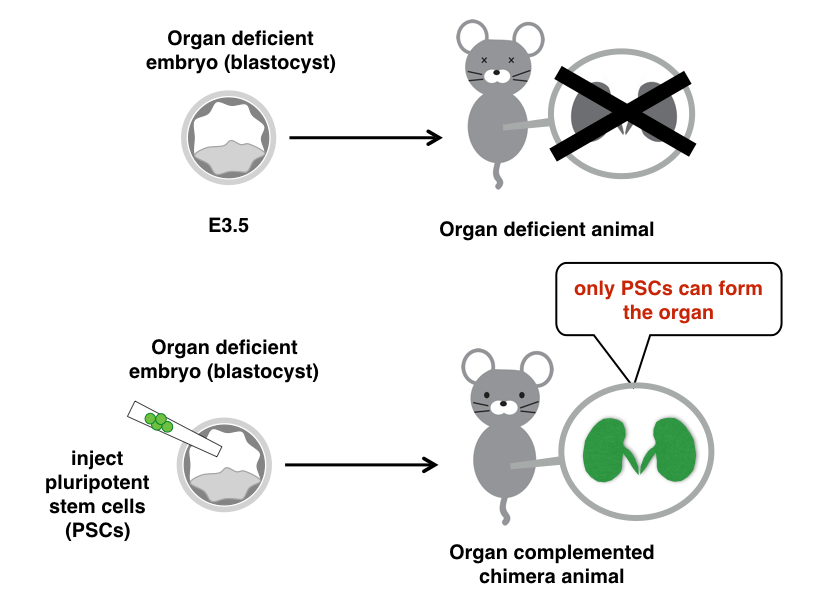2022.11.01
What are the conditions necessary for organ generation by the blastocyst-complementation method?
Organ Developmental Engineering ・ Assistant Professor ・ Shunsuke Yuri
Currently, regenerative medicine research is being actively conducted to compensate for the shortage of organs for transplantation. However, it is extremely difficult to reconstruct organs consisting of multiple cell types and complex three-dimensional structures in vitro. Therefore, the "blastocyst-complementation method," in which pluripotent stem cells (PSCs) are injected into early embryos (blastocysts) derived from organ-deficient animals to produce organs derived from PSCs in the animal body, has been attracting attention. However, it is known that some organs can be produced by the blastocyst-complementation method using interspecies chimeric animals, while others cannot. And the conditions necessary for organ generation by the blastocyst-complementation method remain unclear. In this review, I will introduce my research which is related to solve the necessary conditions for organ generation via blastocyst-complementation method and the issues that need to be solved in the future.
Shunsuke Yuri NAIST Edge BIO, e0006. (2022).

